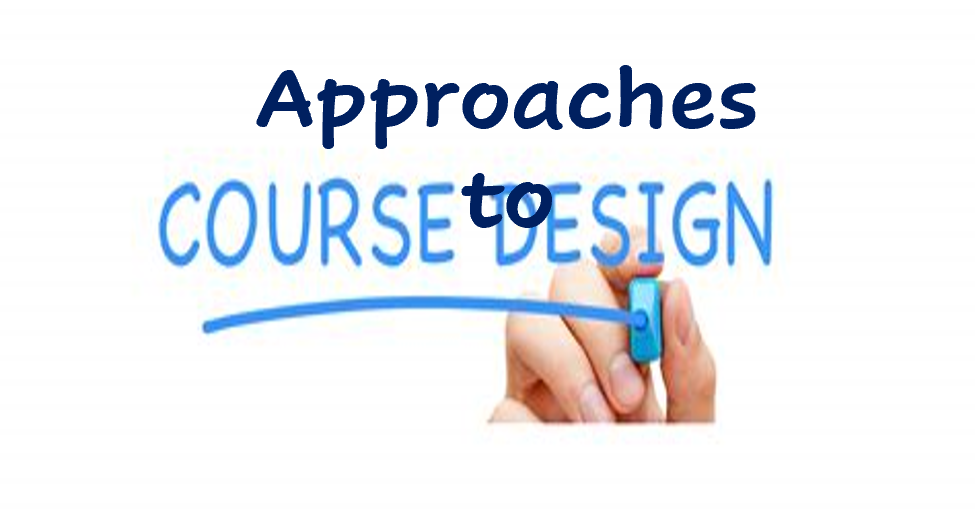
Below you will find various approaches to course design to include in your course. View and choose the design that speaks to you. If you need assistance, please feel free to contact you Instructional Technology Consultant.
Instructional Design & ID Models of Learning

one photo/Shutterstock.com
Abstract: The only way to make the e-learning experience attractive and interactive is to infuse digital tools with effective instructional design models.
What Is Instructional Design?
Instructional design is a process in which instruction is improved through the systematic development of learning experiences. In simpler terms, instructional design is about using knowledge of how people learn and using instructional sequences and strategies to help students’ reach optimal learning outcomes through the design, creation, and delivery of instructional resources, experiences, and courses. This discipline, also known as Instructional Systems Design (ISD) which follows a multi-phase approach to creating diverse, effective and successful online courses.
Instructional Designers are specialists who implement and develop educational materials, create effective learning experiences, presentations, support materials, and much more. This is why Instructional Designers can be of value when designing your course(s). The list of responsibilities of instructional designers also includes the following items:
- Conducting a needs analysis to identify what precisely the students’ needs are
- Analyzing those needs and how they can be met through training
- Determining the learning goals and how to measure them
- Collecting information about the target group of students (motivational factors, behavior patterns, background knowledge, and much more)
- Developing an educational strategy, curriculum, and the most effective teaching methods
- Monitoring learning outcomes to assess the success of the entire learning process
One of the traits of instructional designers is material neutrality, which means they can work with any topic. This makes them very flexible and indispensable professionals.
Instructional Design (ID) Models Of Learning
Instructional design is one of the most fundamental and creative ways of building and delivering an engaging learning experience to users. Instructional design is a rather extensive process that includes various design models with specific characteristics which are worth discussing separately.
Today creating an online course without interacting with instructional designers can be very challenging for course creators. What does the instructional design process look like during the training and development stage? Below are a few fundamental models Instructional Designers use when creating courses.
Here are a few models used at UNCG:
Quality Matters (QM) & QM Checklist

3 Components of Quality Matters
- Research supported rubric
- Professional Development for faculty and staff
- Peer reviews of courses and programs
5 types of rubrics for online and blended courses in
- Higher Education
- K-12
- Continuing & Professional Education
Quality Matters is...
- A Rubric consisting of 8 General Standard areas
-
-
Course Overview and Introduction
-
Learning Objectives
-
Assessment and Measurement
-
Instructional Materials
-
Learner Interaction and Engagement
-
Course Tools and Technology
-
Learner Support
-
Accessibility
Note: In the Higher Education Rubric, within the 8 General Standards there are 42 Specific Review Standards.
Alignment: Critical course elements that work together to ensure that students achieve the desired learning outcomes.
NOTE: To learn more about Quality Matters UNCG offers Online and Face-to-Face workshops. Please click on Workshops & Events. -
-
- A Peer Review Process dedicated to continuous improvement
- Professional Development to support the activities of Peer Course review and continuous improvement
Underlying Principles of QM
QM is a faculty-driven peer review process that is:- Collaborative - designed by and for faculty to share expertise and experience relative to the design of an online or blended course.
- The course review process is a Collegial discussion between faculty peers who are committed to
- Continuous improvement. QM is NOT an evaluation!
Articles - Quality Matters
- Brown, V.S., Lewis, D., & Toussaint, M. (2018). Students’ perceptions of quality across four-course development modules. Online Learning, 22(2), 173-195. doi:10.24059/olj.v22i2.1213 Retrieved from https://olj.onlinelearningconsortium.org/index.php/olj/article/view/1213/390 - Link to article
ADDIE MODEL
- Analysis
- Design
- Development
- Implementation
- Evaluation
Backward Design
- Stage 1: Identify Desired Results
- Stage 2: Determine Acceptable Evidence of Learning
- Stage 3: Design Learning Experiences & Instruction
Teaching to the Test vs. Teaching the Test
One criticism of this approach is that is appears to promote “teaching to the test”. Yet despite the negative connotation that comes along with that phrase, arguable teaching to the test is exactly what the role of the instructor should be. This does not mean teaching the test itself, of course. But if a known final test or assessment is required, then the backward design can be a useful way to prepare learners to perform well on the final assessment.
Instructional Design Blog & Archived Articles

If you believe you have an inspiring topic to talk about or know your voice can motivate the teaching audience, reach out to Tierney King at tierney.king@magnapubs.com with your podcast topic ideas!
Archived Blog Posts
This page will include links to previous articles posted in the SON ID Blog. If a link is broken, please contact your ATS in the hope the link can be restored.
-
- Increase Student Learning in only 3 Seconds - Jennifer Sullivan
-
- Integrating the Science of How We Learn into Education Technology- Stephen M. Kosslyn
-
- Unlocking the Quiet Moment: Cell Phones, a Surprising Tool - Bryan J. Coleman
-
- Strategies to Elicit Engagement in Online Labs - Adam Aguiar, PhD
-
- Student-led Lessons Rather than Student Presentations - Perry Shaw, EdD
-
- The Value of Worksheets for Asynchronous Online Courses - Meriah L. Crawford, MFA, PhD
-
- Helping Student find their writing voice - Crystal O. Wong, EdD
-
- Three questions to help facilitate effective classroom discussion - Dimple J. Martin, PhD